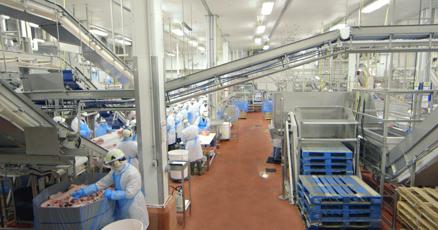The abrupt closure of Canada’s Agri-Food Pilot Program has sent ripples through the nation’s food production sector, potentially disrupting the journey of food from farm to table. The federal government’s decision to end this specialized immigration pathway—designed to address chronic labor shortages in meat processing, mushroom production, and greenhouse cultivation—has left industry leaders scrambling for solutions in an already fragile labor market.
“This decision couldn’t come at a worse time,” says Martin Caron, president of the Canadian Federation of Agriculture. “Our producers are facing unprecedented staffing challenges while trying to maintain food security for Canadians. The pilot was a rare bright spot in our labor strategy.”
The three-year program, launched in May 2020, was intended to provide a clear path to permanent residency for temporary foreign workers in key agricultural sectors. Unlike the traditional Temporary Foreign Worker Program, the Agri-Food Pilot created stability by offering participants and their families a route to become permanent Canadian residents after accumulating sufficient work experience.
Immigration Minister Marc Miller defended the closure, stating that the pilot had reached its 2,750 application cap. However, industry associations counter that the program’s termination leaves a critical gap in Canada’s agricultural workforce development strategy that no existing program adequately fills.
Recent data from Statistics Canada reveals the severity of the situation—the agricultural sector currently faces nearly 20,000 vacancies, representing almost 7% of all positions. This vacancy rate significantly exceeds the national average across industries and creates vulnerability in Canada’s food supply chain.
“These aren’t just numbers on a page,” explains Dr. Sylvain Charlebois, director of the Agri-Food Analytics Lab at Dalhousie University. “Each unfilled position in food processing can affect production capacity by 15-20%. When multiplied across the industry, we’re talking about potential food shortages and price increases that directly impact Canadian consumers.”
The Canadian Meat Council reports that processing plants across the country operate at 30% reduced capacity due to staffing shortages—a situation the Agri-Food Pilot was specifically designed to address. Without a replacement program, industry experts warn that food prices could rise further and domestic food production might be compromised.
Agricultural economists point to a perfect storm of challenges: an aging workforce, urbanization drawing younger Canadians away from rural agricultural jobs, and the physically demanding nature of many processing positions. The pilot program had been tailored to address these structural issues by creating sustainable pathways for workers willing to fill these essential roles.
“We’re advocating for an immediate replacement program,” states Marie-Claude Bibeau, spokesperson for the Canadian Agricultural Human Resource Council. “The agricultural sector needs specialized immigration streams that recognize the unique challenges we face in staffing these critical food production positions.”
The program’s closure comes amid broader debates about Canada’s immigration policies and foreign worker programs. Critics of temporary worker programs have long advocated for direct paths to permanent residency, precisely what the Agri-Food Pilot aimed to provide.
As industry representatives prepare to meet with government officials next month, the fundamental question remains: How will Canada ensure its food production capacity without adequate staffing in key agricultural sectors? The answer may determine not just the future of Canadian agriculture, but also the stability of food prices and availability in grocery stores across the nation.
























